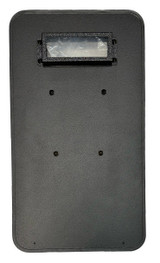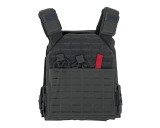Understanding Military Armor Plates: Types, Materials, and Protection
Understanding Military Armor Plates: Types, Materials, and Protection
In the world of modern warfare, protection is paramount. Whether it's a soldier on the battlefield or a law enforcement officer facing dangerous situations, armor plays a critical role in safeguarding lives. Understanding military armor plates, their types, materials, and protection levels is not just essential for those in the field; it's a topic of great interest for enthusiasts and those concerned with safety.
Types of Military Armor Plates
When it comes to military armor plates, there is no one-size-fits-all solution. The military employs a variety of armor plate types to address different needs. These include soft armor, which is flexible and ideal for concealed protection, hard armor, designed to withstand high-velocity threats, and composite plates, which combine various materials for improved protection and reduced weight. Each type has its applications, and their advantages are situation-specific.
Materials Used in Armor Plates
The materials used in military armor plates are a critical factor in their performance. Common materials include ceramics, steel, and ultra-high-molecular-weight polyethylene (UHMWPE). Ceramics are lightweight and effective at dissipating impact energy. Steel is renowned for its durability and affordability, while UHMWPE offers excellent protection without adding excessive weight. Each material has its strengths and weaknesses, making the choice of material a careful consideration for military planners.
Ballistic Protection Levels
Armor plates are categorized by ballistic protection levels, following standards such as the National Institute of Justice (NIJ) standards. These levels, like Level III, Level IV, and various special threat ratings, indicate the type of threats and ammunition the plates can withstand. The choice of protection level depends on the expected threats in a specific scenario.
Military Body Armor Systems
Armor plates are not standalone components; they are integrated into body armor systems. These systems include plate carriers, vests, and fully integrated gear. The combination of armor plates with these systems ensures maximum protection while allowing mobility and comfort for the wearer.
Weight vs. Protection
In the military, there's a constant trade-off between the weight of armor plates and the protection they provide. Heavier plates offer higher protection but can reduce mobility and stamina. Lighter plates provide increased mobility but at the cost of protection. Military personnel must balance these factors to ensure they remain effective in the field.
Future Trends and Advancements
The development of military armor plates continues to evolve. Emerging technologies and materials promise even better protection. Research into nanomaterials, advanced ceramics, and smart armor is shaping the future of military protection. These innovations have the potential to make armor more effective, lighter, and adaptable to various threats.
How Military Armor Plates Are Tested
Military armor plates undergo rigorous testing to ensure their reliability and effectiveness. Ballistic tests are conducted to assess their ability to withstand bullets and shrapnel. Certification standards, such as those by the NIJ, ensure that plates meet specified criteria for protection levels. These tests are crucial in maintaining the quality and reliability of armor plates.
The Role of Military Armor Plates in Modern Warfare
The impact of military armor plates in modern warfare cannot be overstated. Recent military operations have shown how these plates have saved lives by withstanding direct hits and protecting vital organs. In the face of increasing threats, armor plate technology plays a pivotal role in ensuring the survivability of soldiers and personnel in combat zones.
In conclusion, understanding military armor plates is crucial for both those who depend on them in the line of duty and those interested in the technology behind modern protection. These plates come in various types and are made from diverse materials to provide different levels of protection. As technology advances, so too does the potential for more effective and lighter armor. In a world where safety is paramount, military armor plates continue to play a pivotal role in safeguarding lives and achieving mission success.
Recent Posts
-
Understanding Ballistic Shield Ratings and Their Applications
The Trusted Name in Tactical Defense - BattleSteel® When it comes to protecting those who protect us …2025-04-19 -
The Importance of Hearing Protection in Tactical Environments
The Legacy of BattleSteel® BattleSteel® is a trusted name in the world of tactical defense equipment …2025-04-14 -
How to Properly Fit and Wear a Plate Carrier
About BattleSteel and Their Mission BattleSteel is a trusted name in the tactical gear industry, ren …2025-04-11


